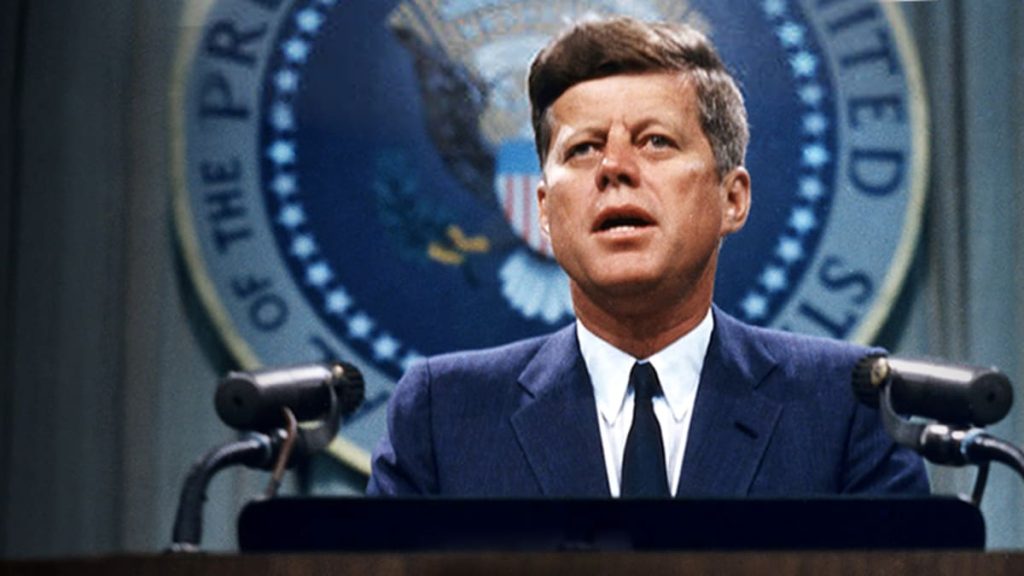The New York Times editorial Board claims that the “solution to America’s mental health crisis” is already in place.
The Times makes the familiar argument that deinstitutionalization–the process of closing or downsizing public psychiatric hospitals–was a righteous cause betrayed by officials who did not fund “community-based” alternatives. The Times claims that there is a “crisis in the care of people with severe mental illnesses like schizophrenia or bipolar disorder. However, policies and programs that can reverse this crisis have been around for decades. The solution they propose is to finance community mental health centers (CMHCs), a program outlined by the 1963 Community Mental Health Act.
John F. Kennedy signed The Community Mental Health Act. He called for state mental hospitals to be gradually replaced by a network community-based centers that provide inpatient and outpatient services in the patients’ “communities.” It was not necessary to move away from faraway asylums. Kennedy signed the Community Mental Health Act after he outlined the first half of his vision. States closed or reduced the number of their public mental hospitals within the five years following the act’s signing. In 1965, more than 500,000 people were admitted to public mental hospitals. By 1975, this number had nearly halved and there were less than 100,000 state hospital patients by 1990.
Today, less than 95 percent of state hospitals are still in operation. A significant portion of patients they house are not mentally ill criminals. A long-term psychiatric patients cannot be admitted to a state hospital unless they have committed a crime or become a danger to themselves or others. According to , it’s much easier to get your child into Harvard Medical School than to find a psychiatric room in a state hospital.
The Medicaid statute was enacted by Congress to force states to reduce their mental hospitals and make room for CMHCs. Medicaid dollars cannot be used to pay for patients in hospitals that have 16 or more adult psychiatric bed. States were encouraged to move former mental patients into nonpsychiatric settings such as nursing homes with 15 or fewer beds. This would ensure that those patients would be eligible under Medicaid. To keep the number of patients receiving psychiatric diagnosis at a facility below 15, some states changed patient’s medical records. For example, a 1998 Chicago Tribune study found that Illinois had “modified at most 1,000 psychiatric patient records at 20 other nursing homes” since 1995 and received an additional $30 million from Medicaid.
According to the Times, the CMHC model was meant to be “a single point for patients in a catchment area who need not only access to psychiatric treatment but also help navigating the world,” but failed due to the fact that the federal government did not provide long-term funding for these new clinics. CMHCs are still available; there are 3.6 community mental hospitals for every psychiatric institution. The gap is even more stark when “psychiatric institutions” are restricted to the remaining public mental facilities, which tend to handle the most difficult cases.
Practically speaking, CMHCs did not fail because of lack of funding. The equivalent of $20 billion was allocated for their construction. They failed because they were ill-equipped for serving people with severe mental illness. An interview I did with E. Fuller Torrey, a schizophrenia researcher in 2020, shows that CMHCs failed because they lack funding.
My colleagues love to tell this myth. It is a very popular myth among my colleagues because it overlooks the fact that many of the centers that were funded were insolvent. This is what I detailed in my book Where to Go. It was the first book I wrote about these issues. This book was published in 1980 and describes in detail the “mental health centers” we funded. We funded more than 700! They were not caring for the patients who came out of the hospitals. They took care of the “worried well” and that was part the plan since the beginning. People who designed the CMHC movement believed that psychotherapy could be used to prevent schizophrenia. This would mean that we wouldn’t need state hospitals for these people. The whole concept of community mental-health centres was flawed right from the beginning. There were many well-meaning people involved in the program. I know a friend who worked in a CMHC. Although he will say that the majority of the program’s failures were due to money problems, the data I collected at the time are clear and have been published. The community mental-health center did not take care of those who came out of the hospital and who needed it most. These patients’ well-being was not taken seriously. Although it was flawed from the beginning, my liberal friends would rather believe that it was only a matter of money. Reagan decimated our mental-health system by blocking funding for states. It is simply not true.
With some justification, the psychiatrists who staffed CMHCs were reacting to the abuses of this asylum model. They believed serious mental illnesses could “prevent” by implementing “mental-health” programs in schools and addressing social problems like homelessness. This theory was supported by significant lobbying of politicians to support housing reform and labor rights. They continued to do this even though many ex-patients in state hospitals wandered the streets and stopped taking their medication. This led to a spiral into psychosis. The Times acknowledges that the centers tried to tackle a variety of nonpsychiatric crisis, but says there is nothing in the CMHC model to have led them to so.
Although community-based options were and still are an important lifeline for those who do not require inpatient care, the CMHCs were created with an anti-asylum vision. This prevented a true continuum from being developed after their creation. Stanley Yoles, who was one of the architects for the CMHC system, reportedly hated state hospitals and wanted them to close down the g-ddamned warehouses. That antagonism, which infected many of the CHMC workers who thought themselves superior to the old “ward psychiatrists,” prevented the centers from using the important resource provided by state hospitals–a secure, therapeutic campus for the hardest cases–and from coordinating with state hospitals as those hospitals discharged patients during the height of deinstitutionalization.
They are part of “the Community” by nature. This is in contrast to the asylums which were located far away from rural areas. They keep patients ” alive.” They can keep patients “in vivo” (as a homelessness advocate used to say about those with serious substance abuse issues) if they are “counterproductive.”
The Times admits at the end of their editorial that “a truly robust mental healthcare system will need to include a variety of services”, including “some congregate facilities for the small percentage of people who are unable to live safely in the community.” Their argument is muddled by this concession. The people whom the Times describes as having “serious mental illness”–particularly the ones who require intensive monitoring, are a persistent danger to themselves and others, and to whom “freedom” to live in “the community” amounts to the freedom to be insane and deteriorate to violence–are the very people whom community-for-all ideologues insist have an inalienable human right to live in “the community.” This was the basis for the 1963 Community Mental Health Act. In 1965, progressives rejected federal asylum funding. Today, their successors rejected it.
The Times editorial states that community based mental health care has never before been attempted. It is “community mental healthcare”–the notion that any person suffering from a mental illness can be treated in a “community based” setting, regardless of how severe it may be–that has created the “crisis” that the Times is trying solve.
In a sense, the editorial board is correct that there is a “solution to our mental crisis.” Each state still has at least one public mental institution, many of them being the same “asylums”, which were established in the early 20th century. Many of these hospitals were still serving their original purpose, which was to provide “retreat” for those suffering from serious mental illness. These hospitals should be expanded, coordinating their services with community centers and creating a continuum care model that rejects the idea that asylums were empty.









